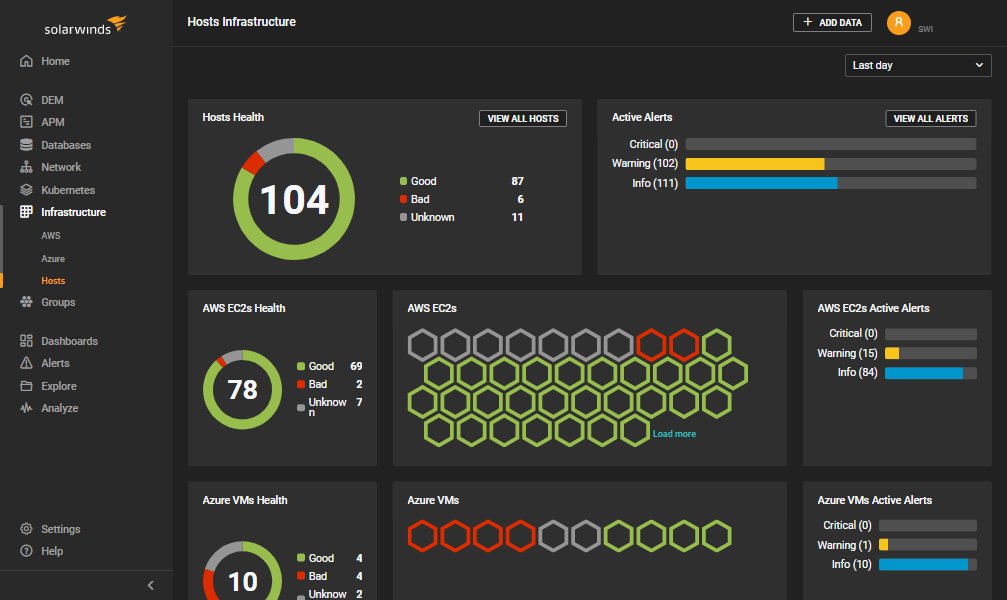How Facebook, Twitter and other big sites give back to Open Source

 Big sites and services like Yahoo, Facebook, Twitter and many others rely heavily on open source software to run their operations. Happily, this isn’t a one-way street. They are also giving back to the open source community, not just by contributing to existing projects, but sometimes by open sourcing their own internal projects, giving back something completely new.
Big sites and services like Yahoo, Facebook, Twitter and many others rely heavily on open source software to run their operations. Happily, this isn’t a one-way street. They are also giving back to the open source community, not just by contributing to existing projects, but sometimes by open sourcing their own internal projects, giving back something completely new.
And what these popular sites can contribute is often quite valuable. Since they tend to be very large, they run big operations and have been forced to create solutions for scalability and performance problems that most other sites simply don’t have to deal with.






 Think about the software you use day to day. Depending on your profession and interests, what you use will vary, but some applications tend to show up over and over again. Microsoft Word and Excel, Powerpoint, Photoshop, various web browsers like Internet Explorer and Firefox, Skype, iTunes, and so on.
Think about the software you use day to day. Depending on your profession and interests, what you use will vary, but some applications tend to show up over and over again. Microsoft Word and Excel, Powerpoint, Photoshop, various web browsers like Internet Explorer and Firefox, Skype, iTunes, and so on. Is Facebook taking the first steps towards making itself an internet-wide payment platform?
Is Facebook taking the first steps towards making itself an internet-wide payment platform? Supercomputers. There probably isn’t a tech geek out there who doesn’t find them intriguing. Huge, hulking computers with performance that’s ages ahead of what we have on our desktops. They are the most powerful computing devices on the planet.
Supercomputers. There probably isn’t a tech geek out there who doesn’t find them intriguing. Huge, hulking computers with performance that’s ages ahead of what we have on our desktops. They are the most powerful computing devices on the planet. Google has perhaps more than any other company become “The Internet Company.” It’s grown hand in hand with the internet and its entire business model has from the start been totally focused on the internet as a delivery platform.
Google has perhaps more than any other company become “The Internet Company.” It’s grown hand in hand with the internet and its entire business model has from the start been totally focused on the internet as a delivery platform.
 Considering that we here at Pingdom work with uptime issues daily (as you tend to do when you run an uptime monitoring service), we thought the latest
Considering that we here at Pingdom work with uptime issues daily (as you tend to do when you run an uptime monitoring service), we thought the latest  After Apple’s iPad announcemet, Adobe Flash was inadvertently thrust into the spotlight. Apple’s tablet device was pitched as the future of web browsing, but just like the iPhone, support for Flash was conspicuously absent. This led to a discussion that ultimately split many commenters into two camps; those that believe the iPad’s lack of Flash makes it an inferior web browsing device (despite
After Apple’s iPad announcemet, Adobe Flash was inadvertently thrust into the spotlight. Apple’s tablet device was pitched as the future of web browsing, but just like the iPhone, support for Flash was conspicuously absent. This led to a discussion that ultimately split many commenters into two camps; those that believe the iPad’s lack of Flash makes it an inferior web browsing device (despite 




 Sometimes you want an easy way to share your
Sometimes you want an easy way to share your 
 The tech industry is littered with billionaires. We all enjoy a good income, but some clearly have earned more than others. Much, much more. The question is, how much money do the really big names in tech actually have?
The tech industry is littered with billionaires. We all enjoy a good income, but some clearly have earned more than others. Much, much more. The question is, how much money do the really big names in tech actually have? We’re happy to say that it’s going extremely well for Pingdom. Our
We’re happy to say that it’s going extremely well for Pingdom. Our  You could say that this is a post about unexpected success in unexpected ways.
You could say that this is a post about unexpected success in unexpected ways. Most country code top-level domains on the Internet represent areas with millions of people, such as .uk (United Kingdom), .ca (Canada), .de (Germany), .se (Sweden), and so on, but there a places where the population isn’t counted in the millions, or even thousands, that still have their very own top-level domain on the Internet. Some of them aren’t even inhabited.
Most country code top-level domains on the Internet represent areas with millions of people, such as .uk (United Kingdom), .ca (Canada), .de (Germany), .se (Sweden), and so on, but there a places where the population isn’t counted in the millions, or even thousands, that still have their very own top-level domain on the Internet. Some of them aren’t even inhabited.



















